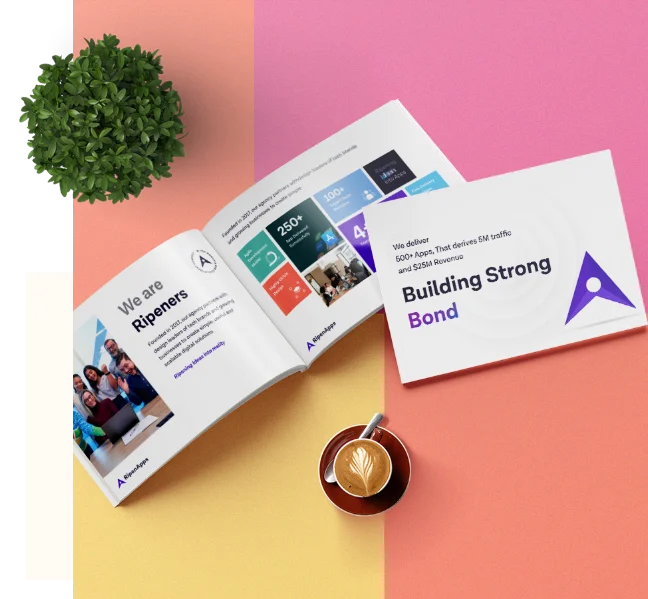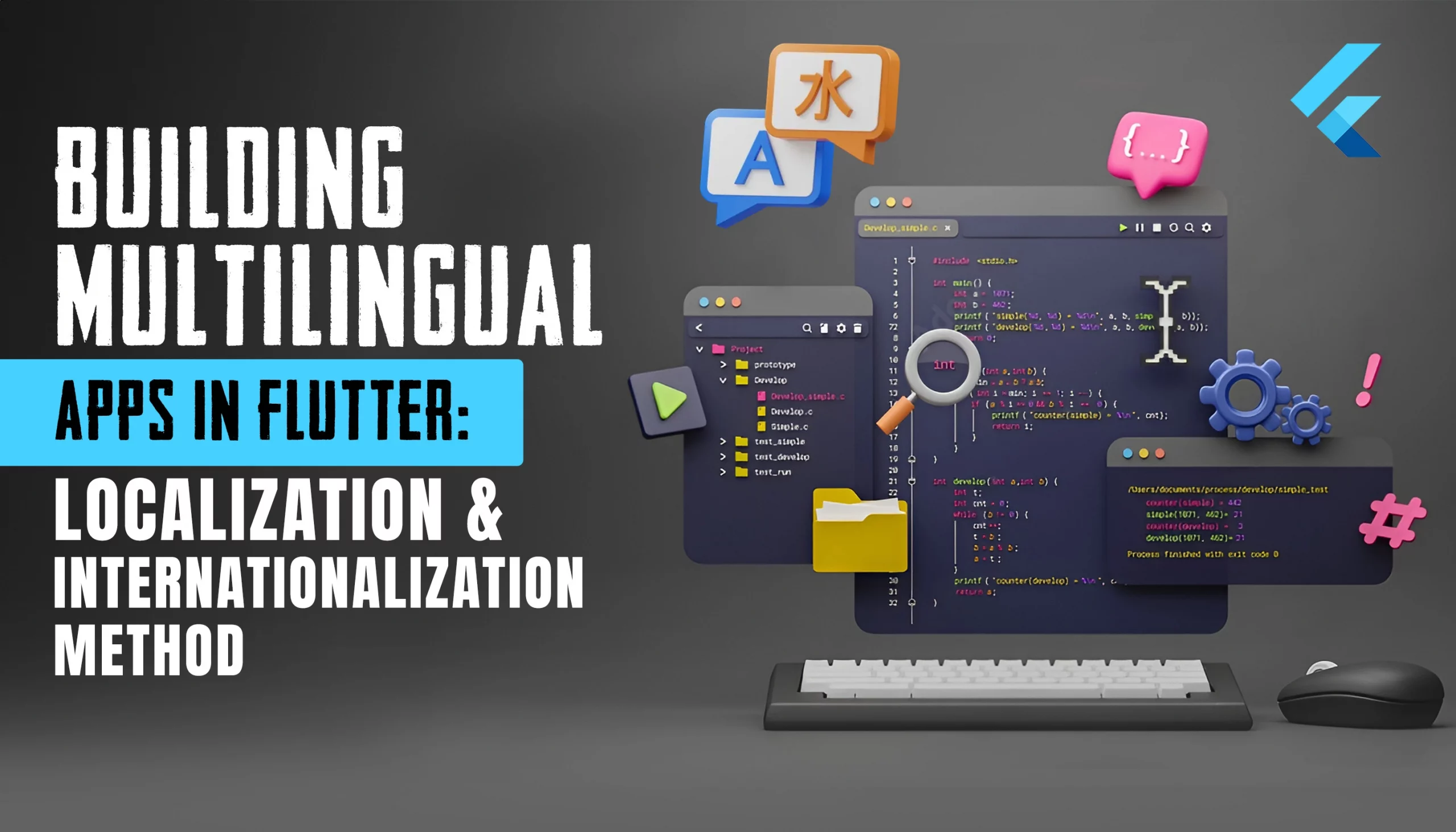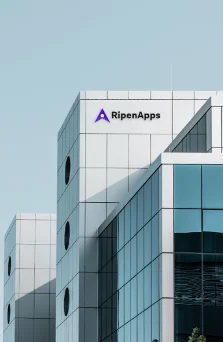Have you ever wondered how the world’s most famous apps like YouTube, Netflix, Spotify, Instagram, TikTok, and others have acquired a huge user base across the entire globe?
It is because of the multilingual ability.
In today’s interconnected world, the ability to communicate with a global audience is essential for any mobile app. This is where implementing multi language in Flutter becomes a game-changer. Whether you’re creating a gaming app, a productivity tool, or an e-commerce platform, making your app accessible and user-friendly to people from diverse linguistic backgrounds is a key factor to achieving success at the global level.
The multilingual feature not only enables your app to connect personally with the regional audience but also increases user engagement, which ultimately results in better conversions. Thus, if you also aspire to acquire a global use base through your app, you need to integrate multilingual features to connect with people from different linguistic backgrounds.
When it comes to building multilingual Flutter apps, Localization, and Internationalization appears the most suitable technique. This method allows developers to create dedicated functionality that supports diverse languages. To guide you on this, here we will explain how to build a multilingual app through localization and internationalization using Flutter.
Table of Contents
Benefits of Building Multilingual Flutter Apps
Building multilingual apps in Flutter holds immense importance in today’s globalized world. It’s a strategic decision that can significantly impact your app’s success and longevity. Multi language flutter app opens doors to new audiences, improves user engagement, and strengthens your app’s position in a competitive marketplace. When you add the multilingual feature in your Flutter multi language app, you get various advantages such as:
Access to a Wider Audience
By offering your app in multi language flutter, you can tap into a larger and more diverse user base. This is especially critical if you’re aiming for global reach or targeting regions with diverse linguistic backgrounds.
Increased User Engagement
Users are more likely to engage with an app that speaks in their native language. Multilingual apps can provide a more personalized and comfortable user experience. As a result, it can lead to increased user retention and satisfaction.
Competitive Advantage
In a crowded app marketplace, localization can give your app a competitive edge. It sets your app apart from competitors that may only be available in a single language. Thus, it would make your app more appealing to potential users.
Enhanced User Experience
Localization goes beyond just translating text. It involves adapting cultural nuances, date and time formats, and even graphics to suit the preferences of different regions. This enhances the overall user experience. And thus, it ensures that the app feels native to users in various locales.
Compliance and Legal Requirements
In some regions, there are legal requirements to provide apps and services in the local language. Failing to do so can lead to regulatory issues and hinder your app’s success in those markets.
Improved User Reviews and Ratings
Integrating Flutter multi language support ensures that users can interact with your app in their preferred language, enhancing their overall experience. Users are more likely to rate and review an app positively if it’s available in their language and provides a seamless experience. Positive reviews and ratings can significantly boost your app’s visibility and credibility.
Global Monetization
If your app generates revenue through in-app purchases, subscriptions, or any other app monetization method, localization can open up new revenue streams. Users are more likely to make purchases when they can understand and trust the content and payment processes.
Brand Image and Trust
Offering a multilingual app demonstrates a commitment to inclusivity and accessibility. It helps build trust with users. It is because they see your app resonates with their linguistic and cultural needs.
User Retention
Multilingual apps can reduce the churn rate as users are less likely to abandon an app due to language barriers. Users who can comfortably use your flutter app multi language are more likely to become loyal customers. Consequently, it could help you improve user retention.
Global Expansion
Expanding an app’s presence to new markets is an ever-evolving need of any business And, starting with a solid multilingual foundation makes the expansion process smoother. It allows for quicker adaptation to new markets and user preferences.
What is App Localization?
App localization is the process of adapting a mobile application for multiple languages. It enables the app to make it linguistically, culturally, and functionally suitable for a specific target market or audience in a different region or country. Localization goes beyond mere translation. It involves customizing the app to ensure that it feels native and user-friendly to users from different language backgrounds. Below are the key components of app localization that are implemented in building multilingual apps:
- Language Translation
- Cultural Adaptation
- Date and Time Formats
- Numeric Formats
- Units of Measurement:
- Regional Regulations
- Local Content
- Customer Support and Documentation
What is App Internationalization?
Contrary to localization, it focuses on enabling the app for multiple locales. App internationalization is often abbreviated as i18n where “18” represents the number of letters between “i” and “n” in “internationalization”. So, it is the process of designing and developing a mobile application in a way that allows it to be easily adapted and customized for different languages. Internationalization is the first step in creating a multilingual app and lays the foundation for localization. App internationalization can also impact the Flutter app development cost.
The primary goal of internationalization is to separate the application’s core functionality from any specific language or cultural elements. As a result, it makes it flexible and adaptable for various international markets. Here are the key aspects of app internationalization:
- Code Separation
- Unicode Support
- Date and Time Handling
- Number and Currency Formatting
- Text Direction
- Support for Pluralization and Gender
- User Interface Layout Flexibility
- Locale Detection
Steps for Implementing Internationalization and Localization To Build a Multilingual Flutter App
Flutter is one of the top cross-platform app development frameworks which comes with great internationalization and localization ability. Using this, Flutter developers can build feature-rich and high-quality multilingual apps that perform seamlessly across all platforms and devices. Moreover, Flutter’s localization and internationalization functionality allows the app to flawlessly adapt to different languages.
However, implementing this functionality in Flutter apps requires several key steps. You will need to hire dedicated mobile app developers who are skilled in deploying this technique in Flutter. Below we have mentioned the important steps to apply internationalization and localization for building multilingual apps in Flutter
Step 1: Internationalization (i18n) Setup
1. Prepare Your Development Environment
First, start by setting up Internationalization (i18n). For this, make sure you have Flutter and Dart installed on your computer. Create a new Flutter project or open an existing one.
2. Initialize Internationalization
Add the ‘flutter_localizations’ package to your ‘pubspec.yaml’ file. This package provides localization support.
And, import the necessary libraries in your Dart files
import 'package:flutter/material.dart';import 'package:flutter_localizations/flutter_localizations.dart';
3. Define Supported Locales
In your ‘main.dart’ or a separate localization file, define the supported locales for your app. Here is the sample code:
final supportedLocales = [const Locale('en', 'US'), // English, United States
const Locale('es', 'ES'), // Spanish, Spain
// Add more locales as needed
];
4. Set Default Locale
After this, specify a default locale for your app. This is the fallback locale if a user’s preferred language is not supported.
final fallbackLocale = const Locale('en', 'US'); // English, United States
5. Wrap Your App With Material App and Localizations Widgets
In your ‘main.dart’ file, wrap your ‘MyApp’ (or equivalent) widget with ‘MaterialApp’ and ‘Localizations’ widgets:
runApp(MaterialApp( // ... localizationsDelegates: [ GlobalMaterialLocalizations.delegate, GlobalWidgetsLocalizations.delegate, ], supportedLocales: supportedLocales, locale: fallbackLocale, // ... ), );
Step 2: Extract Localizable Strings
1. Identify Localizable Text
Go through your app’s codebase and identify all text strings that need to be translated. This would involve labels, button text, error messages, and user interface elements.
2. Use intl Package or Flutter’s Intl Library
To make your strings translatable, use the intl package or Flutter’s Intl library to wrap your text with translation functions. Here is the code flutter multi language example:
Text(AppLocalizations.of(context).translate('hello'));
3. Create a Default Localization File
Create a default localization file for your app, typically named app_en_US.arb (for English, United States). This file will contain the default English translations.
{
"hello": "Hello",
// Add more translations here
}
Step 3: Generating Localization Files
1. Use Flutter’s intl_translation Package
Add the intl_translation package to your pubspec.yaml file.
Generate localized files using the flutter pub pub run intl_translation:generate_from_arb command. For example:
flutter pub pub run intl_translation:generate_from_arb \ --output-dir=lib/l10n --no-use-deferred-loading \ lib/localizations.dart lib/l10n/intl_*.arb
2. Add Translations
For each supported locale, create a corresponding .arb file (e.g., app_es_ES.arb for Spanish, Spain) and add translations.
Step 4: Implement Localization
1. Load Translations in Your App
Create a ‘LocalizationsDelegate’ to load translations from the .arb files and add it to your app’s MaterialApp.
2. Switch App Language
Provide a user interface to allow users to switch the app’s language. You can use the intl package or Flutter’s Intl library to manage the current locale.
Step 5: Localize UI Elements
In this step, your app needs to Adapt UI for Different Languages. For this, Adjust the layout and design of your app to accommodate different text lengths, text directions (LTR or RTL), and cultural preferences.
Step 6: Testing and Debugging
After implementing all the codes and techniques, test your app thoroughly to ensure that translations are accurate. Make sure the app behaves as expected in various languages and regions. Implement error handling and fallback mechanisms to handle cases where translations are missing or incomplete.
Step 7: Publish and Maintain
Now, your multilingual Flutter app is ready to be launched. You can publish your multilingual app to app stores and make it available to users in different regions. And your app is all set to penetrate new markets across the globe. However, as your app evolves, you will also need to continuously update your app with current trends. This will allow your app consistent with changes and user feedback.
Best Practices for Building Multilingual Apps in Flutter
Building multilingual apps in Flutter requires attention to detail and adherence to best practices to ensure a smooth and user-friendly experience for your global audience. By following these best practices and tips, you can create a multilingual Flutter app that not only reaches a wider audience but also provides an exceptional user experience tailored to the linguistic and cultural preferences of your users in different regions. Here are some best practices and tips for incorporating multi language in Flutter:
1. Plan Your Localization Strategy
Determine which languages and regions you want to target based on your app’s potential user base. Understand cultural differences and preferences in your target markets. Based on this, tailor your app’s content and design accordingly.
2. Use Flutter’s Localization Tools
Try to make use of the flutter_localizations package to integrate Flutter’s built-in localization support. It provides access to default localization resources and widgets. Consider implementing the intl Package. The intl package offers additional tools for managing translations and formatting. As a result, it helps in complex localization needs.
3. Keep Text Separated from Code
Avoid hardcoding text strings directly into your code. Instead, store them in separate resource files (e.g., .arb files) for easy translation. Use Keys for UI Elements. Flutter app developers can assign unique keys to UI elements to easily identify and translate specific widgets.
4. Maintain Consistent Code Structure
Focus on keeping a consistent code structure and naming conventions throughout your app. This will make it easier for Flutter developers to work on the same project. Maintaining a consistent code structure also saves valuable time and cost for Flutter app development.
5. Handle Plurals and Gender
Understand Linguistic Nuances: Different languages have varying rules for plurals and gender-specific language constructs. Therefore, you should understand specific language rules related to denoting plurals and gender. Use Flutter’s intl package to handle these linguistic variations.
6. Provide Context for Translators
Include contextual information or comments in your resource files. This will help translators understand how a specific string is used within the app. Therefore, you should provide context for translators in the Flutter app.
7. Test Thoroughly
Rigorous testing is one of the best practices for building multilingual apps in Flutter. You should test your app with various languages and regions to ensure text fits within UI elements. Also, there should be no layout issues or text overflow problems. Make sure that your app Flutter multi language support right-to-left (RTL) languages. For instance Arabic or Hebrew, with proper text direction and layout adjustments.
8. Localize Images and Graphics
Building multilingual apps in Flutter is just about translating text. It goes beyond text translation. Your Flutter app should be equipped with translation for images and graphics too. Hence, if your app includes images with text, provide translated versions of those images or use dynamic text overlay techniques to display localized text.
The Bottom Line
As globalization and interconnectivity is expanding, the need for developing multilingual-supported app is higher than ever. Today, user experience and engagement have become the top factors for determining app success. Therefore, integrating internationalization and localization in apps is the need of the hour.
Especially when your app’s goal is to target a global audience, your app must have the ability to connect with users from diverse languages and cultural regions. And Flutter, being a top-notch framework, provides great technical support for creating multilingual apps.
If you also aspire to expand your app’s reach to the global market, RipenApps can help you achieve it successfully. Our Flutter app development services allow you to leverage the full potential of Flutter and develop feature-rich multiple apps.












 India
India USA
USA Australia
Australia Canada
Canada UK
UK UAE
UAE
